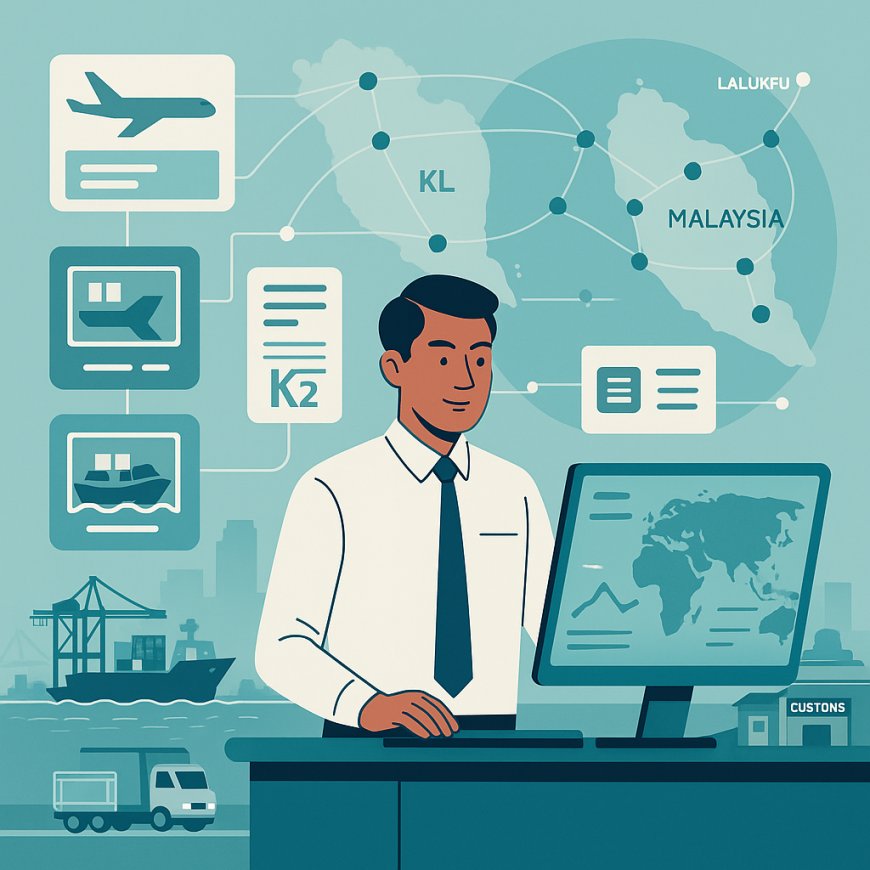What to Look for in Freight Forwarding Software for Your Malaysian Operations
Find out what Malaysian freight forwarders should expect from modern software—customs-ready, cloud-based, multi-branch capable, and built for regional growth.

Freight forwarding in Malaysia is undergoing a rapid digital shift. With rising trade volumes, increasing regulatory compliance from Kastam Diraja Malaysia (Royal Malaysian Customs), and growing customer expectations, logistics businesses can no longer rely on fragmented systems or manual processes.
The right freight forwarding software in Malaysia is no longer just a toolits the nerve center of efficient, compliant, and scalable freight operations. But not all solutions are created equal. As a forwarder, CHA, or logistics service provider, heres what you should look for before investing.
1. Multi-Modal Capability That Reflects Real Malaysian Trade Patterns
Malaysia's logistics ecosystem handles a high volume of ocean, air, and cross-border road freightespecially across ASEAN routes. Choose freight forwarding software that supports:
-
Sea Freight (Import & Export)
-
Air Freight (Import & Export)
-
Cross-border Trucking (to/from Singapore, Thailand, Indonesia)
The system should allow seamless job creation for each mode, handle transshipments, and manage container tracking, airway bill generation, and haulage movementsall from a single interface.
2. Customs and Compliance-Ready for Malaysian Regulations
Customs clearance is a critical step in Malaysian freight forwarding. Your software should integrate with:
-
uCustoms and eDeclare systems
-
Duty and tax calculation for SST/GST (if reintroduced)
-
Document generation compliant with Kastam standards (e.g., K1, K2, K8 forms)
Manual data re-entry across filing, documentation, and invoicing often leads to delays or penalties. A smart system automates this while keeping records audit-ready for Malaysian authorities.
3. End-to-End Visibilityfrom Quote to Delivery
Visibility is no longer a luxuryits a competitive advantage. Freight customers increasingly demand real-time updates on cargo movement, expected arrival, and billing.
Your software should offer:
-
Live shipment tracking dashboards
-
Auto-updates to clients and overseas agents
-
Proof of delivery upload options
It must also provide a centralized view of all freight jobs, customer status, pending customs filings, and financialsgiving your operations and leadership teams control at every stage.
4. Integrated Accounting and Taxation
Managing finances through separate software adds duplication and error. A good freight forwarding software in Malaysia should include:
-
Built-in accounting ledgers (Receivables, Payables, General Ledger)
-
Automated invoice generation, linked to each freight job
-
Multi-currency billing and reconciliation for international clients
-
SST-compliant invoicing and financial reporting
This also helps you ensure branch-level profitability, monitor expenses, and remain tax-compliant without juggling multiple systems.
5. CRM and Sales Workflow Management
In the Malaysian forwarding landscape, maintaining strong client relationships is as important as moving cargo. Look for software that helps manage:
-
Customer onboarding and KYC
-
Quotation management and rate cards
-
Sales pipeline and lead tracking
-
Client-specific reporting
An integrated CRM ensures your sales team and operations are aligned, and youre not losing business due to internal miscommunication.
6. Multi-Branch and Multi-Country Operations
Many Malaysian forwarders operate in Johor, Klang, Penang, and KLsometimes even across Singapore and Indonesia. Choose software that supports:
-
Multi-branch access with location-wise controls
-
Single database architecture (no duplication between branches)
-
Multi-currency and multi-country support for ASEAN operations
-
Centralized control with branch-level execution
This makes inter-branch shipments, revenue recognition, and reporting seamlessand prepares your business for regional expansion.
7. Cloud-Based with Local Support
Scalability and access are non-negotiable. Cloud-based systems give you:
-
Access from anywhereideal for remote work and mobile teams
-
Data backups and security managed by the provider
-
Lower upfront infrastructure costs
That said, ensure your provider has on-ground presence or support in Malaysia. Youll need someone who understands local regulations, trade patterns, and languages.
8. Digital Connectivity with Trade Partners
An intelligent freight forwarding system doesnt just manage internal workflowsit connects you with external stakeholders:
-
Airlines and shipping lines (for schedules, bookings, and updates)
-
Banks (for payment links or export document financing)
-
Warehouses and transporters
-
Overseas agents
With digital freight corridors growing across ASEAN and beyond, systems like Logi-Sys enable freight job sharingletting you securely transfer job data to your overseas partners and avoid redundant entry.
9. Analytics and Control Tower Views
To grow, you need data-driven decisions. Your freight ERP should offer:
-
Real-time dashboards of KPIs
-
Profitability reports per job/client/branch
-
Performance analysis of sales and operations teams
-
Exception alerts for delays, documentation, or payment issues
This is not just reportingits actionable intelligence to drive strategy.
10. Scalability Without Chaos
Perhaps most importantly, your system should scale as you grow. Whether you're expanding service lines, opening new branches, or onboarding new teams, your software must:
-
Handle increasing data loads
-
Maintain speed and stability
-
Avoid siloed modules or disjointed processes
Freight ERP platforms like Logi-Sys are designed specifically for growing forwardersgiving you the digital backbone to scale operations without scaling chaos.
Final Word
Selecting the right freight forwarding software in Malaysia is a strategic investment. Its not just about automating tasksits about enabling control, compliance, customer satisfaction, and growth. Prioritize platforms that are built for the freight industry, offer local compliance support, and give you end-to-end visibility and scalability.
If you're looking to modernize your freight operations while staying aligned with Malaysias trade environment, make sure your software partner understands both logistics and local realities.











































